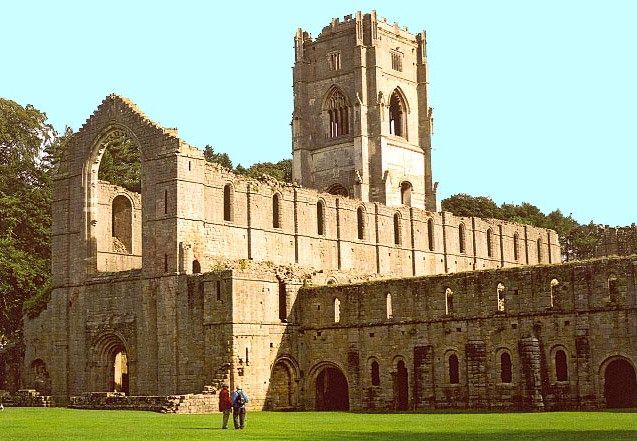Fountains Abbey

|
Monasticism flourished in the North of England from around the 7th Century. It survived the Danish invasions of the 9th and 10th centuries
and revived quickly following the Norman Conquest of 1066. William I settled his followers on the lands that were forfeited to him and this new Norman nobility proved
to be enthusiastic patrons of the various religious Orders which were in existence. Whitby was amongst the Benedictine abbeys which were restored at this time and its monks founded the house of St. Mary's in York 1088-89. |
It was a dispute at St Mary's which led to the founding of Fountains Abbey. Some of the monks at St Mary's had become dismayed that many of the requirements of the Rule of St. Benedict had mellowed over the centuries and yearned for a return to the old, much stricter regime than that now practised in St. Mary's. They were particularly influenced by the very disciplined attitude of monks from the young Cistercian Order who passed through York in the spring of 1132. (These monks had been on their way to found Rievaulx Abbey as a daughter house of St. Bernard's Cistercian abbey of Clairvaux in France).
In the summer of the same year the reformers, led by Prior Richard, presented proposals for reform to the elderly abbot of St. Mary's. As the tension increased, the Archbishop of York, Thurstan, intervened and took the 13 dissident monks into his protection.
The monks spent Christmas at the Archbishop's palace in Ripon and on 27th December they made their way three miles up the valley of the River Skell to settle on lands given to them by Thurstan.